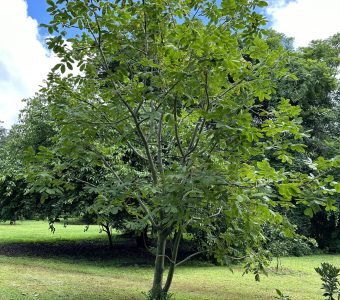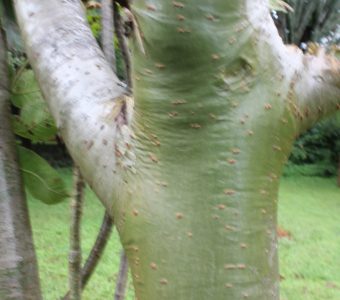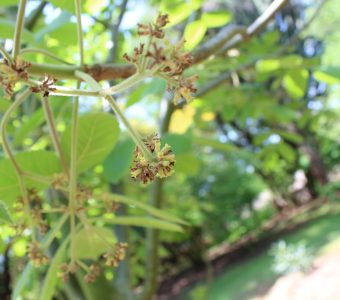


Botanical Name: Commiphora mollis
Common Name: Mubwabwa, Muswezi, Musangaluembe, Chiawa, Chololo, Muntyokela
Plant Family: Burseraceae (Myrrh Family)
Growth Form, Habitat and Distribution: Part of a large family that are difficult to distinguish from each other. C. mollis is a shrub or small, deciduous tree (<12m) without spines but with multiple branches creating a rounded crown when in leaf. Generally leafless from April to October. Occurs widely across Zambia except in parts of the Northern and Western Provinces and in forest. Often on termite mounds.
Size: Height 3 to 12m, spread 2 to 5m.
Bark: Cream coloured and papery over green under-bark, becoming dark brown and scaly with age. When damaged exudes a white sticky gum.
Leaves: Alternate, imparipinnate with 2 to 6 pairs of elliptical grey-green leaflets 6cm, hairy on the underside. Aromatic when crushed.
Flowers: Monoecious/bisexual. Yellowish-pink and fragrant in small axillary clusters before the new leaves October to November.
Fruit: Round 1cm, densely hairy, ripening the following March to August flesh mucilaginous and aromatic, Skin splits to reveal a single seed attached by a bright red 4-lobed pseudo-aril.
Uses: Traditionally the charcoal was used for gunpowder. Makes an interesting dry season specimen tree in a garden.
